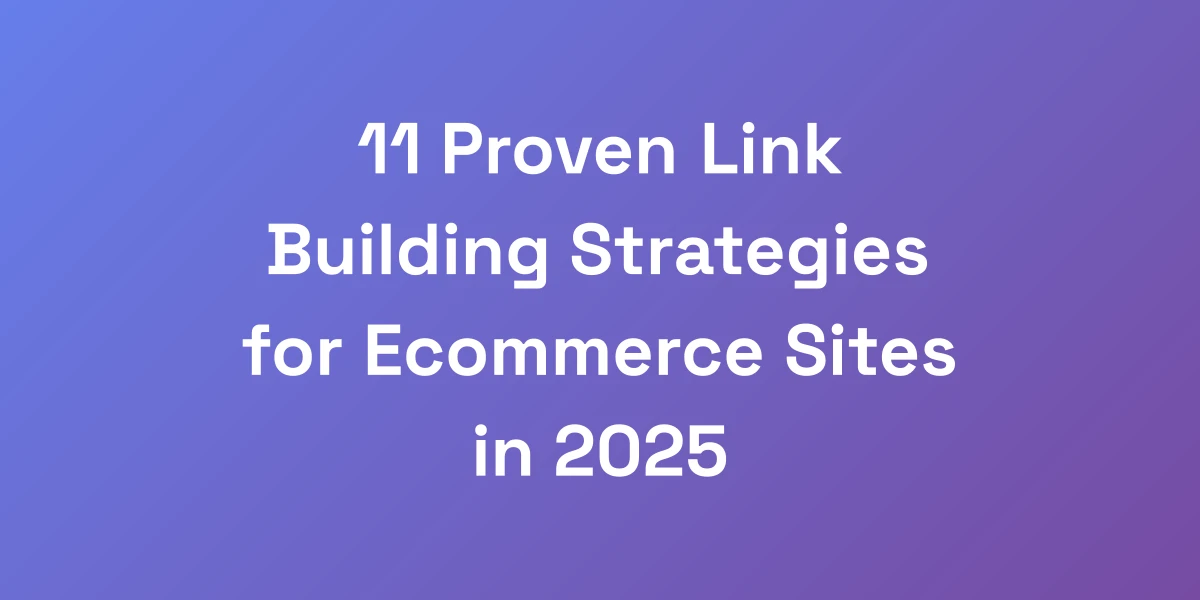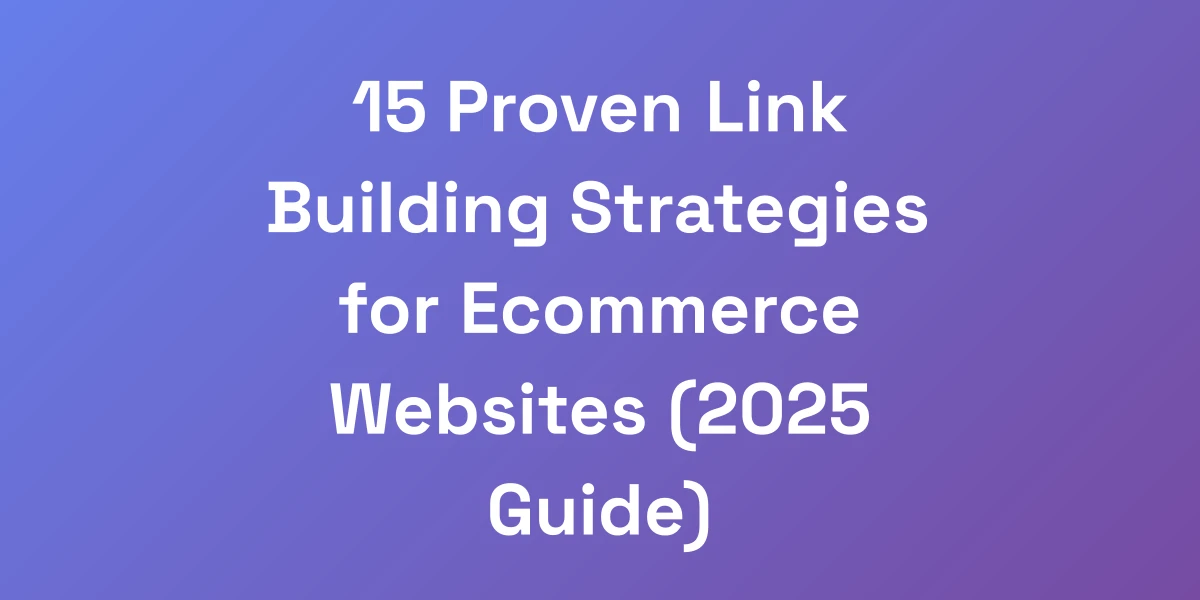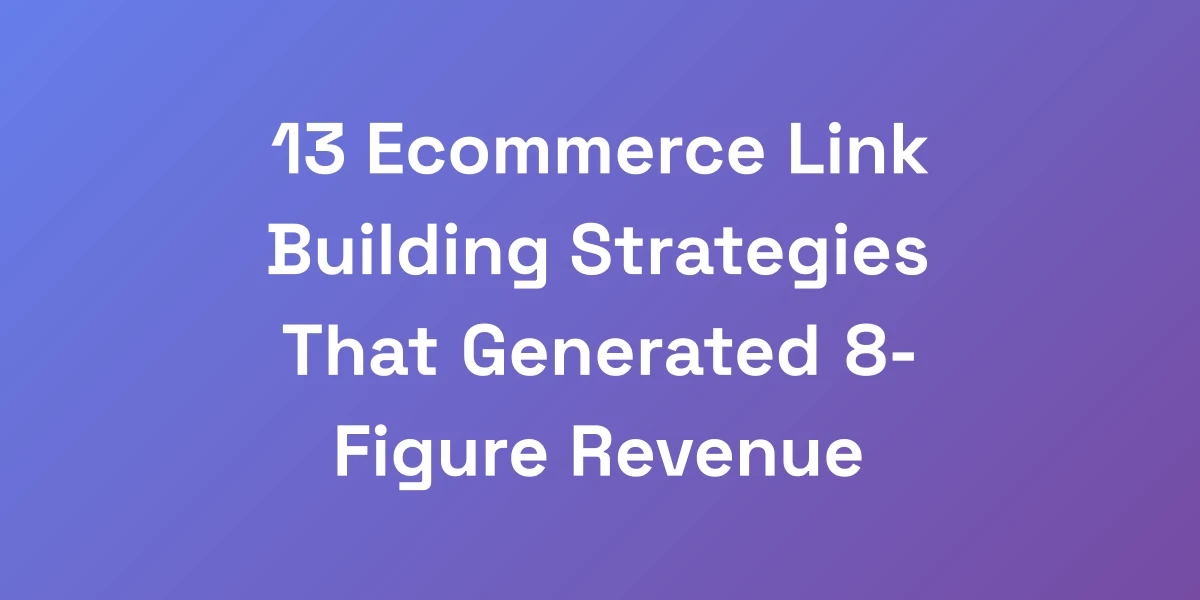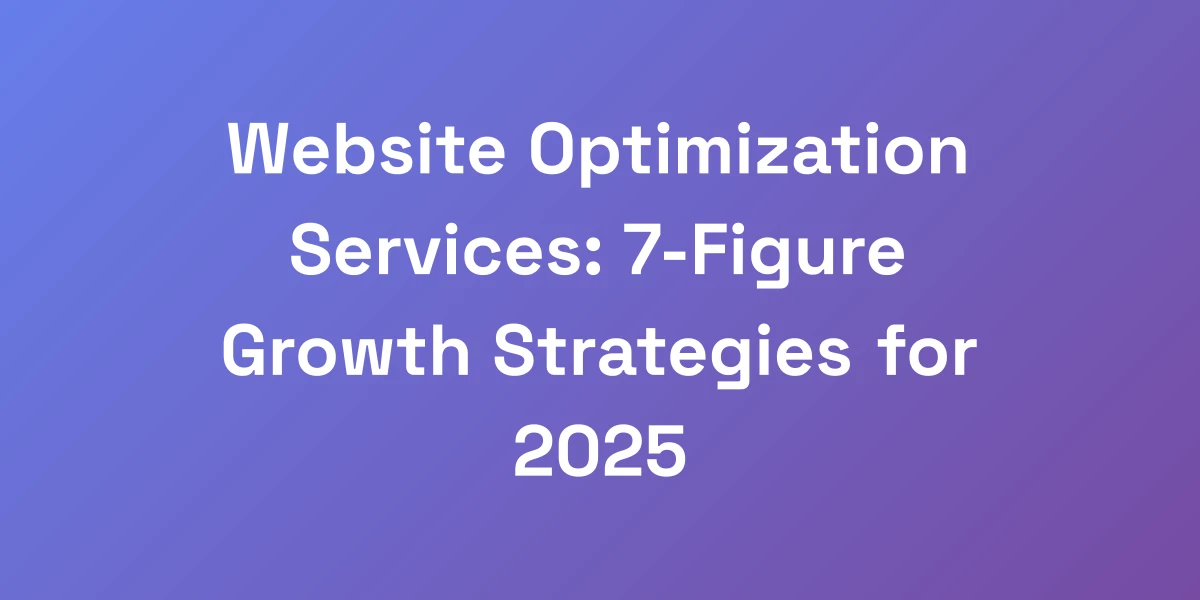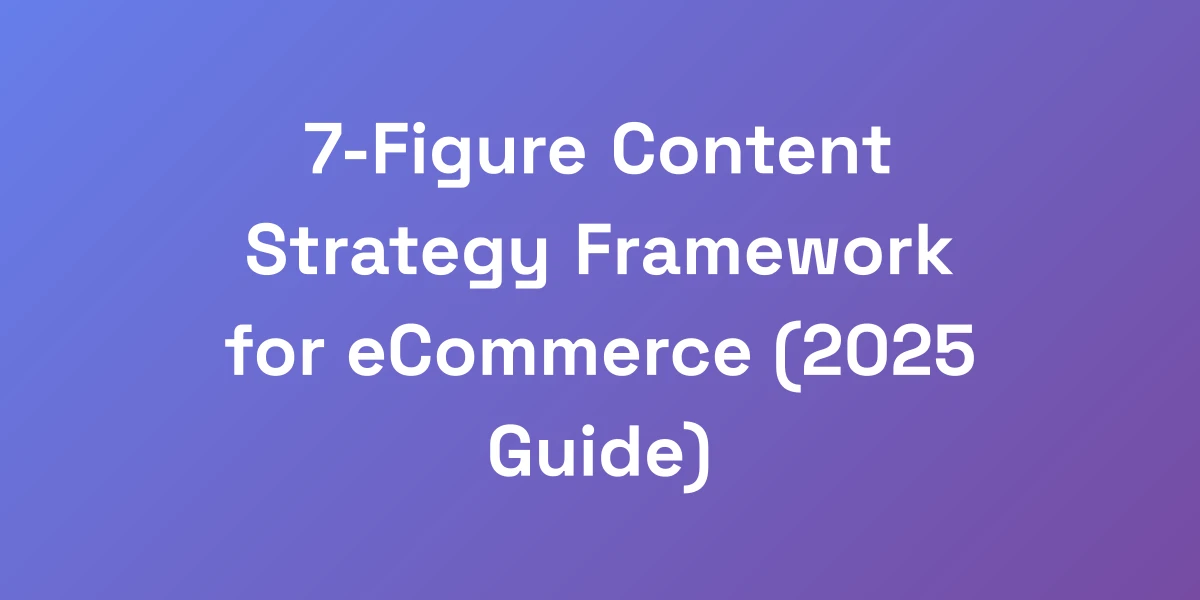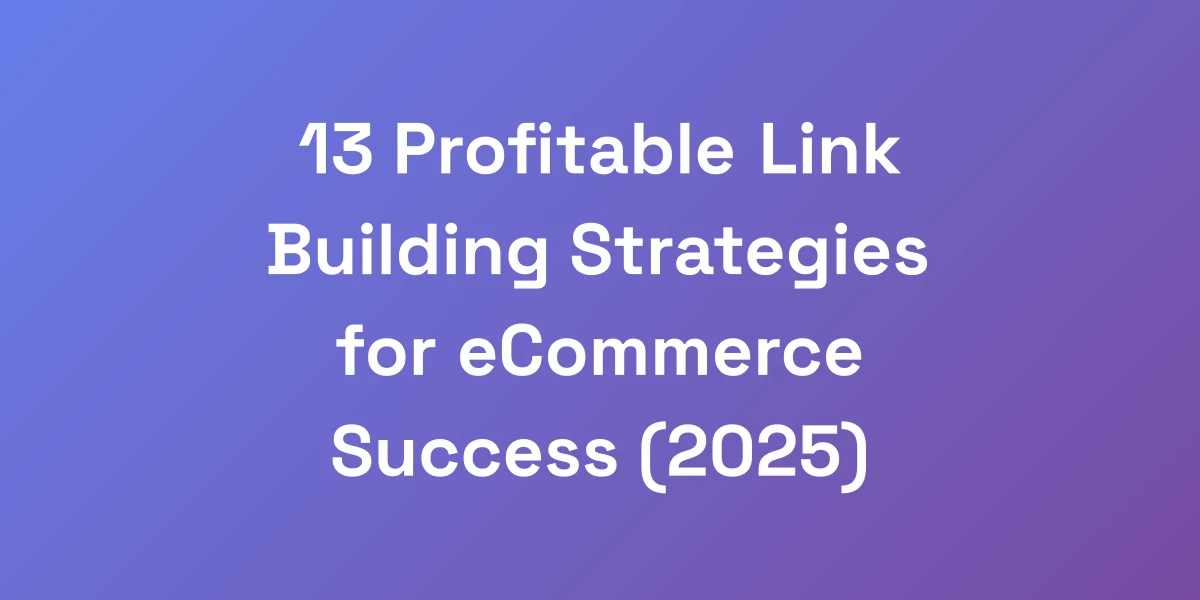
13 Profitable Link Building Strategies for eCommerce Success (2025)
Mar 11, 2025 | By [email protected]
Why Traditional Link Building Fails Most eCommerce Stores
Let us be direct – 90% of ecommerce stores are burning money on ineffective link building. We’ve consulted with hundreds of online stores, and they all make the same critical mistake: chasing random backlinks without a revenue-focused strategy.
Here’s the truth – not all backlinks are created equal. The game has changed dramatically in 2025, and if you’re still using outdated tactics, you’re leaving serious money on the table.
Let us show you what actually works for driving both rankings and revenue. According to recent link building statistics, focusing on quality over quantity is crucial for sustainable growth.
The Hidden Cost of Poor Link Building
When ecommerce stores invest in link building without a clear strategy, they face hidden costs that drain their budgets. Wasted resources on low-quality backlinks can lead to poor SEO performance and even penalties from search engines.
Consider this: spending $1,000 on an outreach campaign only to gain 10 irrelevant links is a poor ROI. These links not only fail to boost your rankings but can also harm your domain authority.
- Wasted Budget: Investing in ineffective links means fewer resources for strategies that actually drive revenue.
- Time Consumption: Chasing random backlinks takes time away from optimizing product pages and enhancing customer experience.
- Potential Penalties: Low-quality or spammy links can lead to search engine penalties, hurting your overall visibility.
We’ve seen ecommerce stores lose up to 50% of their marketing budget on failed link building efforts. It’s a silent killer that undermines your entire SEO strategy.
Why Most eCommerce Link Building Services Fail
Most link building services you encounter focus on quantity over quality. They promise a heap of backlinks without considering if those links are from relevant or authoritative sources.
Here’s what usually happens:
- No Strategy: Services don’t align link building efforts with your business goals or target audience.
- Poor Quality Links: Acquiring links from irrelevant or low-authority sites that don’t contribute to SEO or sales.
- Lack of Customization: One-size-fits-all approaches that don’t cater to the unique needs of your ecommerce store.
We’ve found that ecommerce stores often end up with backlinks that offer little to no value, wasting both time and money without any meaningful impact on their revenue or search rankings.
The Shift from Quantity to Quality in 2024
In 2024, the focus shifted sharply from accumulating as many backlinks as possible to securing high-quality, relevant links that can drive targeted traffic and improve SEO. Embracing effective ecommerce link building strategies for 2024 is essential for staying competitive.
Quality links come from reputable sources within your industry, ensuring that the traffic you receive is relevant and more likely to convert.
- Relevance: Links from sites related to your niche are more valuable.
- Authority: Backlinks from high-authority sites boost your domain authority.
- Contextual Placement: Links placed within relevant content have a higher impact.
Embracing this shift means focusing on building relationships with authoritative sites, creating valuable content that naturally attracts links, and ensuring every backlink serves a specific purpose in your SEO and sales strategy.
Understanding Link Equity for Product Pages
Link equity is the value that a backlink from one site transfers to another. For ecommerce stores, understanding and leveraging link equity is crucial for enhancing product page rankings and driving sales.
Imagine your product pages as prime real estate. High-quality backlinks are like reputable neighbors that boost the overall value and visibility of your property.
- Strategic Placement: Ensure that links to your product pages come from relevant and authoritative sources.
- Internal Linking: Enhance link equity by creating a robust internal linking structure that connects your product pages with your best content.
- Optimized Anchor Text: Use descriptive and keyword-rich anchor text that accurately reflects the content of your product pages.
We’ve seen ecommerce stores skyrocket their product page rankings by strategically managing link equity, ensuring that each backlink contributes to both SEO performance and sales conversions.
Common Mistakes Killing Your ROI
There are several common mistakes that ecommerce stores make in their link building efforts, which can severely impact their ROI.
- Chasing Low-Quality Links: Ignoring the importance of link quality for short-term gains.
- Lack of Relevance: Securing links from unrelated niches that do not drive targeted traffic.
- Ignoring Content Quality: Failing to create valuable content that naturally attracts backlinks.
- No Tracking or Analysis: Not measuring the effectiveness of link building campaigns to optimize strategies.
We’ve encountered ecommerce stores making these mistakes repeatedly, leading to diminished returns and wasted marketing budgets. Avoiding these pitfalls is essential for a successful link building strategy that drives real business results.
The Psychology Behind High-Converting Backlinks
Here’s something most SEOs won’t tell you: the best backlinks don’t just pass authority – they pass buying intent.
Think about it. Would you rather have 100 links from random blogs, or 10 links from sites where your ideal customers actually hang out?
We’ve generated over $100M in ecommerce sales, and we can tell you that contextual relevance trumps domain authority every single time.
Let’s break down the exact psychology that makes certain backlinks convert like crazy.
Mapping Customer Journey to Link Placement
Understanding your customer’s journey is fundamental to placing backlinks that drive conversions. By aligning your link building efforts with the stages of the customer journey, you ensure that each backlink serves a purpose in guiding potential customers towards a purchase.
- Awareness: Links from high-visibility platforms to introduce your brand.
- Consideration: Links from niche-specific sites that provide in-depth content about your products.
- Decision: Links from authoritative reviews or comparison sites that influence buying decisions.
By mapping your link placements to these stages, you attract visitors who are more likely to convert, maximizing the impact of each backlink.
Authority vs. Relevance: What Really Matters
While authority is important, relevance plays a more significant role in driving conversions. A link from a highly authoritative site in your niche is far more valuable than multiple links from unrelated high-authority sites.
For example, a backlink from a leading fashion blog is more beneficial for an ecommerce store selling apparel than a backlink from a high-traffic but unrelated tech site.
- Relevance: Links should come from sites that are contextually related to your products.
- Authority: Ensure these relevant sites also have high domain authority.
- Engagement: Links from engaging, well-regarded platforms can lead to higher conversion rates.
We prioritize both authority and relevance, ensuring that every backlink not only boosts SEO but also connects us with our target audience effectively.
The Golden Ratio of Commercial vs. Informational Links
Balancing commercial and informational links creates a natural and effective backlink profile. Commercial links directly promote products, while informational links provide value through content that supports your brand.
- Commercial Links: Links from product reviews, affiliate sites, and ecommerce directories.
- Informational Links: Links from blogs, how-to guides, and industry publications.
The golden ratio lies in maintaining a healthy balance where approximately 60% of your links are commercial and 40% are informational. This strategy ensures a diverse and natural backlink profile that supports both SEO and conversions.
We use this ratio to guide our link building efforts, ensuring that we’re not overly reliant on any single type of backlink.
Leveraging Social Proof Through Links
Social proof is a powerful psychological trigger that can significantly influence purchasing decisions. Backlinks from well-respected social media platforms, review sites, and influencers can serve as social proof, enhancing your credibility and trustworthiness.
- Influencer Backlinks: Partnerships with influencers can provide credibility and reach.
- Review Sites: Links from reputable review platforms boost trust.
- Social Media Mentions: Backlinks from high-engagement social channels validate your brand.
By strategically obtaining backlinks that act as social proof, we enhance our brand’s reputation and encourage more visitors to convert into customers.
Understanding Link Velocity and Brand Signals
Link velocity refers to the rate at which your website acquires backlinks over time. Maintaining a natural link velocity is crucial to avoid triggering search engine penalties.
Additionally, brand signals, such as mentions and buzz around your brand, play a significant role in how search engines perceive your site’s authority.
- Consistent Growth: Gradually increasing the number of backlinks to simulate natural growth.
- Diverse Sources: Obtaining backlinks from a variety of authoritative and relevant sources.
- Brand Mentions: Encouraging organic mentions from respected platforms and influencers.
We monitor our link velocity to ensure a steady and natural increase, while also focusing on strengthening our brand signals to enhance overall SEO performance.
Advanced Link Building Tactics That Scale
Stop begging for links. Start creating leverage. The most successful ecommerce brands we’ve worked with have built systems that generate backlinks automatically. It’s about creating assets that attract links, not chasing them one by one.
We’re going to show you how to build a link acquisition machine that runs on autopilot. These aren’t theory – these are battle-tested strategies that have generated millions in revenue for our clients.
Digital PR Campaigns That Generate Links Automatically
Digital PR is a powerful way to generate high-quality backlinks through strategic storytelling and media outreach.
Here’s how we do it:
- Create Compelling Stories: Develop unique and newsworthy stories that capture media attention.
- Leverage Multimedia: Use videos, infographics, and other media to make your stories more engaging.
- Target Relevant Outlets: Focus on publications and websites that align with your industry and audience.
For example, a successful campaign identified a unique aspect of a product and turned it into a headline story for industry blogs, generating over 60 backlinks and significant media coverage overnight.
Creating Link-Worthy Product Collections
Designing product collections that are naturally link-worthy can attract backlinks without active outreach.
- Themed Collections: Curate products around specific themes or trends that appeal to your audience.
- Exclusive Releases: Offer limited-edition products that create buzz and drive backlinks.
- Bundle Deals: Create attractive bundles that provide value and encourage sharing.
By showcasing unique and compelling product collections on your site, other websites are more likely to reference and link to them as valuable resources.
Leveraging User-Generated Content for Links
User-generated content (UGC) is an excellent way to generate authentic backlinks. Encouraging your customers to create and share content related to your products can lead to organic link acquisition.
- Customer Reviews: Encourage detailed reviews that other sites can reference.
- Social Media Sharing: Promote content sharing on social platforms to increase visibility.
- Contests and Campaigns: Host campaigns that incentivize users to create content that can be shared and linked to.
We’ve seen ecommerce stores double their backlink profiles by fostering an active community that generates and shares content organically.
Partnership and Co-Marketing Strategies
Building partnerships with complementary brands can lead to mutual backlink opportunities. Co-marketing campaigns leverage the strengths of each partner to create valuable content that benefits both parties.
- Joint Webinars: Collaborate on webinars that provide value to both audiences, resulting in shared backlinks.
- Content Collaborations: Co-create blog posts, ebooks, or guides that are promoted by both brands.
- Cross-Promotions: Promote each other’s products in newsletters, social media, and other marketing channels.
For instance, a successful partnership between two complementary ecommerce brands generated numerous backlinks through joint content and promotional efforts, significantly boosting their SEO and sales.
Data-Driven Content That Journalists Love
Creating data-driven content that provides valuable insights can attract backlinks from journalists and industry publications.
- Original Research: Conduct and publish original research relevant to your industry.
- Infographics: Visual representations of data that are easy to share and reference.
- Case Studies: Detailed analyses of successful campaigns or product uses that offer actionable insights.
We’ve seen ecommerce stores enhance their backlink profiles by producing high-quality, data-driven content that becomes a go-to resource for journalists and bloggers, resulting in authoritative backlinks and increased brand visibility.
Measuring Link Building ROI Beyond Rankings
Here’s the brutal truth about link building metrics – most of what you’re tracking is completely worthless. Rankings are vanity metrics. Traffic is a vanity metric. The only metric that matters is revenue per acquired link.
We’re going to show you exactly how to track and optimize your link building for actual business impact, not just SEO metrics. This is the system we use to ensure every link building dollar generates at least 3x return.
Setting Up Advanced Link Attribution
Advanced link attribution allows you to track the direct impact of each backlink on your revenue. By setting up proper attribution, you can identify which links are driving sales and optimize your strategy accordingly.
- UTM Parameters: Use UTM parameters to track the source and performance of each backlink.
- Conversion Tracking: Implement conversion tracking to see which links lead to actual purchases.
- Revenue Attribution Models: Use models that assign revenue based on the contribution of each backlink.
With these tools, you can pinpoint exactly which link building efforts are paying off, allowing for data-driven optimizations that maximize ROI.
Calculating True Link Building ROI
To calculate the true ROI of your link building efforts, you need to consider both the cost of acquiring the links and the revenue they generate.
- Total Cost: Include all expenses related to link building, such as outreach, content creation, and tools.
- Revenue Generated: Track the sales directly attributed to each backlink.
- ROI Formula: (Revenue Generated – Total Cost) / Total Cost x 100%.
For example, if you spend $10,000 on link building and it generates $30,000 in revenue, your ROI is 200%. This clear metric helps prioritize strategies that deliver the highest returns.
Key Performance Indicators That Matter
Focusing on the right KPIs is essential for measuring the success of your link building campaigns. Here are the key indicators we track:
- Revenue per Link: How much revenue each backlink generates.
- Conversion Rate: The percentage of visitors from backlinks who make a purchase.
- Customer Acquisition Cost (CAC): The cost to acquire a new customer through link building.
- Lifetime Value (LTV): The long-term revenue generated from customers acquired through backlinks.
- Return on Investment (ROI): Overall profitability of link building efforts.
By tracking these KPIs, we ensure that every link building campaign is aligned with our revenue goals and delivers measurable business value.
Tools for Tracking Link Performance
Utilizing the right tools is crucial for accurately tracking the performance of your link building efforts.
- Ahrefs: For monitoring backlinks and assessing their quality.
- Google Analytics: To track traffic and conversions from backlinks.
- SEMrush: For comprehensive SEO and link analysis.
- HubSpot: For advanced revenue attribution and CRM integration.
- BuzzSumo: To identify content that attracts backlinks and social engagement.
These tools provide the insights needed to optimize your link building strategy, ensuring that each effort contributes to your revenue goals effectively. Additionally, a business intelligence tools comparison can help you select the right platforms for your needs.
Creating Monthly Link Building Reports
Regular reporting is essential to stay on top of your link building performance and make informed decisions.
- Performance Overview: Summarize key metrics like revenue per link, conversion rates, and ROI.
- Link Profile Analysis: Review the quality and relevance of newly acquired backlinks.
- Strategy Adjustments: Highlight areas for improvement and plan adjustments for the next month.
- Actionable Insights: Provide clear recommendations based on the data to enhance future link building efforts.
By maintaining detailed monthly reports, we ensure continuous optimization of our link building strategies, driving sustained revenue growth and SEO success.
Implementation Framework for Immediate Results
Let’s cut the fluff and get to action. We’re going to give you the exact framework we use with our 7-figure ecommerce clients. This isn’t about theory – it’s about implementation that drives revenue.
Follow this system step-by-step, and you’ll see results within 30 days. The key is focusing on high-impact activities that move the needle immediately while building for long-term success.
30-Day Quick Start Guide
To kickstart your link building efforts, follow this 30-day plan:
- Week 1: Audit your current backlink profile and identify gaps.
- Week 2: Develop high-quality content assets tailored to attract backlinks.
- Week 3: Initiate outreach to targeted authoritative and relevant sites.
- Week 4: Implement advanced tracking and begin analyzing initial results.
This structured approach ensures that you build a solid foundation for sustainable link building success.
Resource Allocation and Budget Planning
Efficient resource allocation and meticulous budget planning are critical for maximizing ROI in link building. Understanding link building pricing helps in allocating funds effectively.
- Identify Key Resources: Allocate budget for content creation, outreach tools, and possible collaborations.
- Prioritize High-Impact Activities: Focus on strategies that offer the highest potential revenue return, such as digital PR and influencer partnerships.
- Monitor Spending: Regularly review and adjust your budget based on performance metrics and ROI.
We recommend dedicating around 20-30% of your marketing budget specifically to link building activities, ensuring you have the necessary resources to implement effective strategies without overextending your finances.
Team Structure and Responsibilities
Building a successful link building operation requires a clearly defined team structure with specific responsibilities.
- Content Creators: Develop high-quality, link-worthy content that attracts backlinks naturally.
- Outreach Specialists: Focus on building relationships with influencers, bloggers, and media outlets to secure backlinks.
- SEO Analysts: Monitor backlink performance and analyze data to optimize strategies.
- Project Managers: Oversee the entire link building process, ensuring all tasks are completed on schedule.
Having a dedicated team ensures that each aspect of your link building strategy is handled efficiently and effectively, driving better results and higher ROI.
Quality Control and Link Monitoring
Maintaining high-quality backlinks is essential for long-term SEO success. Implementing rigorous quality control measures ensures that your link profile remains healthy and effective.
- Regular Audits: Conduct periodic audits to identify and disavow low-quality or spammy backlinks.
- Performance Tracking: Continuously monitor the performance of your backlinks and adjust strategies as needed.
- Compliance: Ensure all link building practices comply with search engine guidelines to avoid penalties.
By maintaining strict quality control, we protect our clients’ backlink profiles from potential harm and ensure sustained SEO performance.
Scaling Your Link Building Operation
Once your link building strategies are yielding positive results, the next step is to scale your operations to amplify these successes. Implementing the art of link building for e-commerce sites can significantly boost your domain authority.
- Expand Content Production: Increase the volume and variety of content assets to attract more backlinks.
- Broaden Outreach Efforts: Engage with a wider range of influencers, media outlets, and industry partners.
- Automate Processes: Utilize tools and software to streamline outreach, tracking, and reporting.
- Invest in Advanced Strategies: Incorporate more sophisticated tactics like data-driven content and strategic partnerships.
By systematically scaling your link building efforts, you can exponentially increase your backlink profile, enhancing both SEO and revenue growth.
Conclusion
We’ve covered a comprehensive range of profitable link building strategies tailored specifically for ecommerce success in 2025. From understanding why traditional methods fail to implementing advanced, scalable tactics, it’s clear that a strategic, revenue-focused approach is essential.
Remember, not all backlinks are created equal. Prioritizing quality, relevance, and strategic placement over sheer quantity can dramatically improve your SEO performance and drive significant revenue growth.
It’s time to stop wasting resources on ineffective link building and start implementing the strategies that truly work. Whether it’s leveraging digital PR, creating link-worthy content, or measuring your ROI beyond vanity metrics, every action you take should align with your business goals.
Ready to transform your ecommerce store’s SEO and boost your revenue? Start applying these proven ecommerce link building strategies today and watch your online presence—and sales—soar.
What link building strategy are you most excited to implement? Share your thoughts and experiences in the comments below, and let’s grow together.
